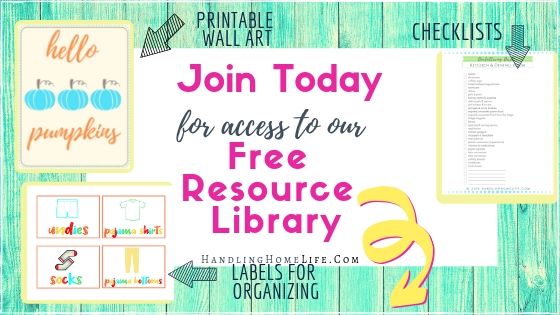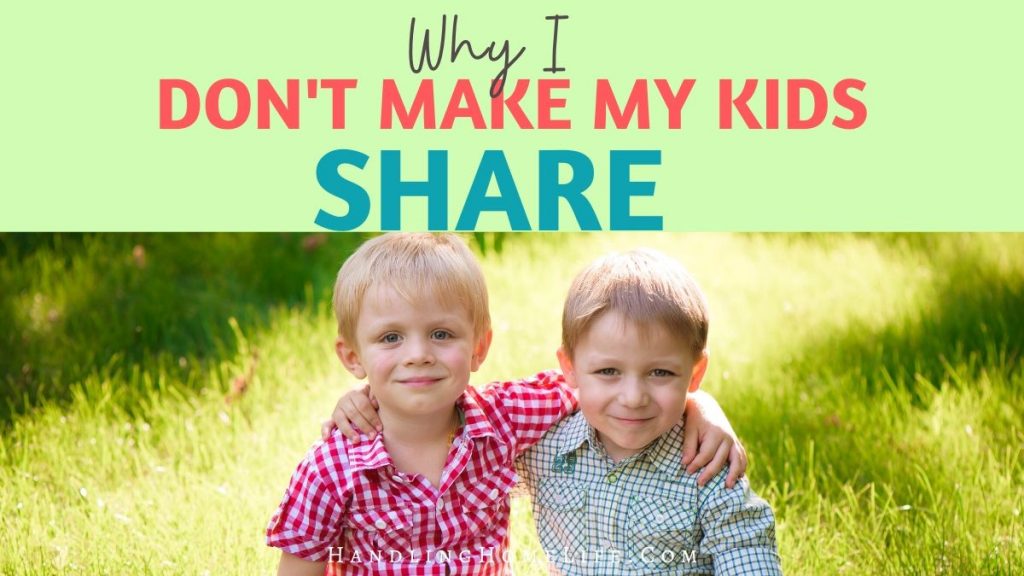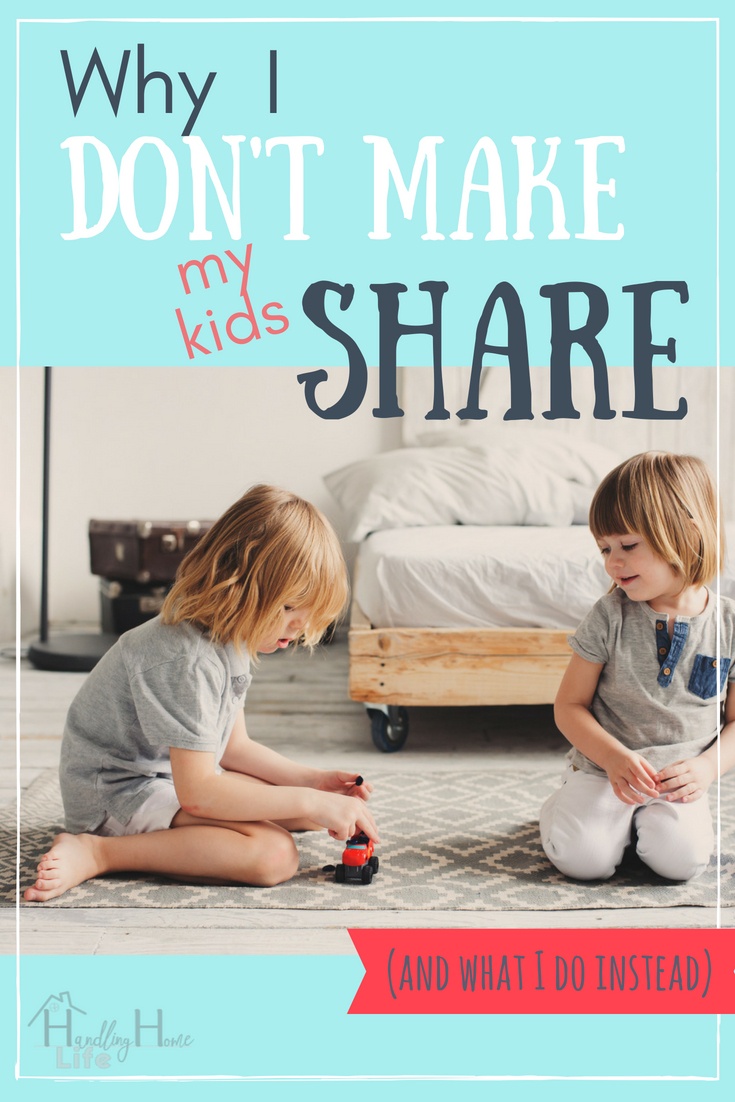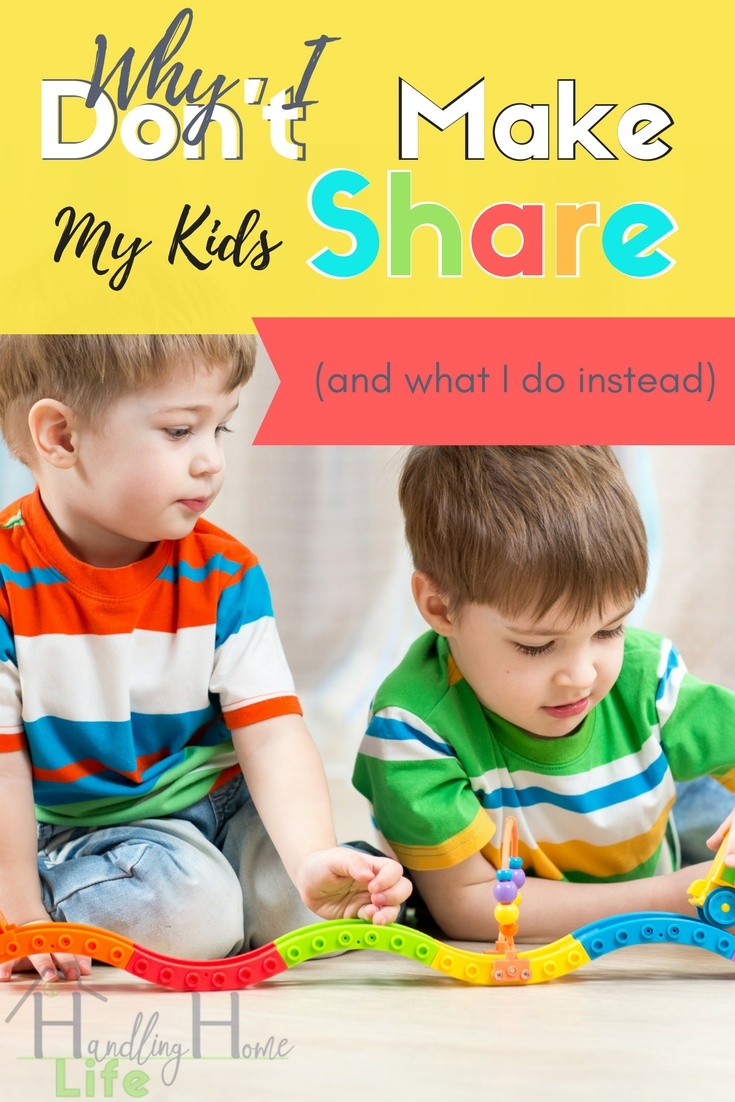With 5 year old twin boys, sharing is an ongoing topic at our house. Whether you’re a first time mom or been around the block, you have most certainly had to spend time teaching a child to share.
This post may contain affiliate links meaning that I may earn a small percentage (at no extra cost to you) if you make a purchase through a link that I share. See full disclosure.
Teaching a child to share is completely different than making the child share. I spend a lot of time teaching, modeling, and explaining, but I don’t force my kids to share.
Very early on, I bought two of the exact same of everything for the twins so they wouldn’t have to share. So if getting a ride on toy, I bought two that were identical in every way.
But, instead of each of them happily riding around on their new toy, they would fight over THE ONE.
The one the other kid was on.
It didn’t matter that there was another riding toy EXACTLY like it….they wanted the one the other had.
Even though there were two identical toys, the boys still had to be taught to share. Had I intervened and made the kids share, I would have lost the opportunity for them to learn (through natural consequences) all of these necessary life skills:
- Kindness
- Generosity
- Patience
- Impulse Control
- How to compromise
- Appropriate assertiveness
- Problem solving
- Empathy
- Being considerate
If you need ideas to get your kids to stop fighting, be sure to read my post:
Manage Sibling Rivalry to Have Peace at Home
Special Needs and Sharing
Sharing is especially tricky when a child is nonverbal. (or has other developmental difficulties) Beckem has an extremely rare disorder (learn about KAT6A here) and is minimally verbal, which requires a differentiated approach. The strategies in this article are more appropriate for typically developing children.
There are different types of Sharing
Taking a turn for a toy is different than two kids playing with the same toy. Sharing cookies with your class is different than sharing half of your cookie with a friend.
And none of it comes naturally.
It’s hard to share and it’s up to us to model and teach our kids what sharing means and what sharing looks like. Lots and lots and LOTS of modeling and practicing BEFORE they are in situations where they are expected to share.
RELATED: The 9 Best Gifts to Buy for 6 Year Old Boys
Teaching a Child to Share
We are really just teaching our kids not to be little jerks that grow into entitled teenagers and adults. Sharing ultimately means being considerate and kind.
If I’m at the gym and someone is using a machine that I want to use, I can:
- wait for her to finish
- find another machine that is similar
- do a set of crunches while waiting
- go get a drink of water
But, I don’t demand that the person let me have my turn right now. I also don’t stand at the machine with my arms rudely crossed giving her the evil eye.
Using real life scenarios like this are helpful to illustrate to kids what sharing and being considerate look like and that grown ups share too (plus they think it’s super funny when you dramatically act it out!)
Good children’s books are another excellent way to help little ones with the concept of sharing. This one is absolutely precious, and here’s an adorable little sharing activity to go with the book that was created by a mom of twins.
RELATED: Organize Kids Books and Set up a Book Rotation
Should Kids Share at the Playground?
First of all, we don’t take toys to the playground.
If we were going to the beach, we would take cheap dollar store toys that we won’t be sad to break or lose. My rule is that they can only take toys that they are willing to share. If a toy is so special that they don’t want any other child to play with it, it stays at home.
By not taking toys to the playground, we are able to focus on climbing, swinging, see-sawing…all the things we can’t do at home. We can play with toys anytime at home.
Sharing at Group Play
We don’t take toys to group play either. Goodness no. There will be plenty of toys already there that they can fight over…I mean share! I like group play centers because it’s ‘neutral‘….the toys don’t belong to any of the children.
Before we go to a play museum or play gym, I always let the boys know what to expect. I explain that there will be fun activities and toys to play with and that there will be other kids there playing with those toys too.
Then, while we are there, I intervene when needed to help them remember how to take turns and how to ask for a turn. If another kid is playing with a truck that Adler wants to play with, I remind him how to ask:
“When you’re finished, can I have a turn?”
I also teach them how to say NO.
If another child tries to take a toy away, he is to say:
“No…I’m still playing with the ‘truck’ but you can have a turn as soon as I’m finished.”
RELATED: Fine Motor Activities for Preschoolers
Sharing at Home
Some toys are too special to share, and I’m okay with that. BUT, that means the toy is put away, out of sight, BEFORE our friends arrive.
It does NOT mean we show the super awesome toy to our guests and then decide to put it out of sight.
Not cool.
The rest of the toys are fair game.
Does this prevent preschoolers from fighting over toys?
Not a chance.
But, I don’t intervene unless things get ugly. I let them negotiate and even argue. I listen from the kitchen as they problem solve and compromise.
Sometimes, one kid will decide to not share and take the toy off on his own, but he quickly realizes it’s not much fun playing all alone.
Real life teaches him that the consequence of not being kind and generous is that you don’t have friends to play with.
I couldn’t have taught this essential life lesson by forcing him to share the toy. Instead, he learned through natural consequences that:
sharing = more friends.
It’s important to provide toys and opportunities that encourage cooperative play. Wooden building blocks are a must and we love these cardboard building blocks.
RELATED: BEST GIFTS FOR 5 YEAR OLD BOYS
RELATED: How to Easily Organize the Playroom

Have you found a successful way to help your kids want to share? Leave a comment below and tell me!
All content here should be considered as opinion only. See full disclaimer.












Thank you, Wendy! I’m so happy you enjoyed it!
xoxo,
Angela
This is a very good post! I have for boys, which to are twins. My older two ( the non-twins) I’m studying to teach sharing but it is hard for me to understand taking turns and that not everything is theirs; they are two years apart. I didn’t think of how hard it will be for my twins. One has bi- lateral hearing loss, I’m going that won’t affect much. But this article was very interesting.
Thank you so much! So happy you found it helpful. You certainly have your hands full with four little boys! I bet there is always fun stuff going on at your house! Waiting to take a turn is definitely still a struggle for my twins. We just have to keep working on it….they will get there!
Great article! I have a 3yo and 5yo. Sometimes sharing is difficult for us, but for the most part, my kids get along and play well. My 5yo is almost done with preschool and has been getting a lot better at sharing, so I’m eager to see how my 3yo does when she starts in the fall. Thanks for sharing this!
Thanks so much, Megan! Preschool is definitely helpful for so many social skills. I’m sure your 3 year old will do great!